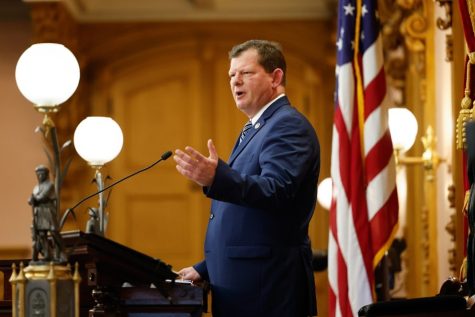Strong Opportunity for Brown/Sinema Democratic Ticket in 2020
January 24, 2019
Politics become even more puzzling than usual when one looks at Democratic Senator Sherrod Brown’s recent re-election to the US Senate in Ohio. Although President Trump carried Ohio by over eight percent in 2016 and Republicans carried every single Ohio statewide office in 2018, Brown decisively won re-election. Ohio is not yet definitively a red state. As will be expounded upon further, Democrats should look no further than Senator Sherrod Brown as their 2020 presidential candidate.
A look at the Ohio county-wise 2018 Senate map indicates that Brown still appeals to northern Ohio industrial voters, whom overwhelmingly supported Donald Trump in 2016. In a national presidential campaign, he would presumably appeal to similar voters in Michigan and Wisconsin, two states that recently re-elected Democratic Senators and switched Governors from Republicans to Democrats. He would also be a strong contender in Pennsylvania, which just re-elected Democratic Senator Bob Casey and Governor Tom Wolf.
A Democratic base hungry for a progressive President should look no further than Senator Brown. In the Senate he has amassed one of the most liberal voting records; voting with liberal icon Senator Elizabeth Warren 94% of their shared time in Congress, Brown is no moderate. Democrats need not be concerned that he will not appeal to their base. It is remarkable that Brown can garner so much support from moderates with this voting record, a phenomenon that speaks to the value of person over policies and Brown’s demeanor. He is also quite experienced in national politics; as of the 2020 election he will have been a US Senator for fourteen years.
For the potential vice-presidential candidate, Kyrsten Sinema (D-Arizona) appears a strong option. Winning the 2018 US Senate election in Arizona, a traditionally Republican state, against another woman, Martha McSally, Sinema can deliver this state and its eleven electoral votes for Democrats, as well as surrounding states New Mexico, Colorado, and Nevada (all three of which did go for Hillary Clinton in 2016). Arizona voters’ dissatisfaction with Trump over his public derogation of the late Senator John McCain may also play into stronger Democratic support, either from Republicans switching parties or simply staying home. Sinema’s moderate ideology will also help balance Brown’s liberality. Those who believe that she does not have national exposure should remember that in 2020 she will have more total congressional experience than Barack Obama had in 2008.
Other potential Democratic candidates, including Senator Cory Booker (D-New Jersey), Senator Kamala Harris (D-California), former Texas representative Beto O’Rourke, and former New York City mayor Michael Bloomberg, have less appeal to the “Rust Belt” voters that Trump is counting on. All of these candidates should have roles in the 2020 election as high-level surrogates, but none can match Brown’s appeal to the Midwest and Sinema’s in the Southwest. O’Rourke should have an especially major role in the 2020 election—a convention speech at minimum—but wait to run for at least one more election cycle for Texas to be formally in play for Democrats.
Looking to the electoral math, using the 2016 map as a basis, Democratic victories in Michigan and Wisconsin under a Brown-Sinema ticket, along with either Ohio or Pennsylvania, would put them over 270. Winning Arizona would bolster this margin and provide a level of comfort. Campaign resources would need to be concentrated in Michigan, Wisconsin, Minnesota, Ohio, Pennsylvania, Virginia, Arizona, and New Mexico.
Ultimately, the Democratic primary voters will decide their candidates. However, this strategy does present strong opportunity for a Brown-Sinema presidential ticket, Democratic reclamation of the Upper Midwest, and a framework for support in future elections in the Southwest.













